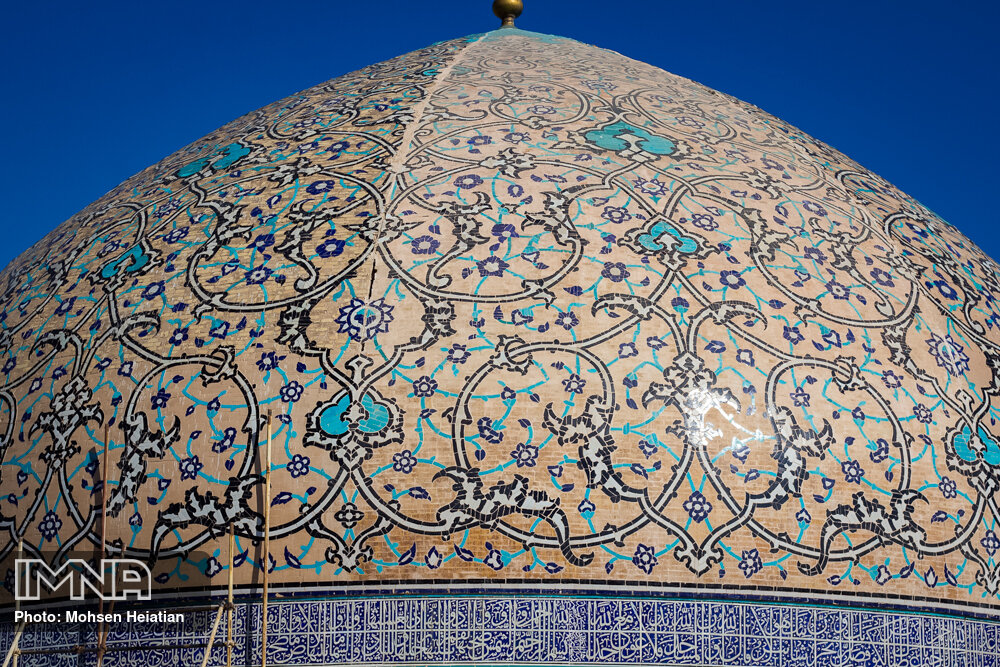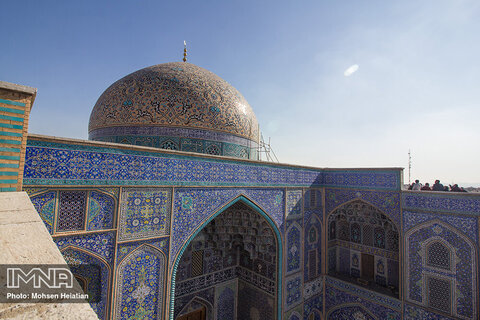Iran (IMNA) - “For the restoration work, the dome surface was divided into 16 portions, of which four portions have recently been restored,” Isfahan’s deputy tourism chief said on Sunday.
Restoration of other portions will start as soon as the needed funds are secured, Seyyed Mehdi Mousavi-Movahed said.
A new round of restoration has been running since 2020, as the previous work of poor quality caused a lot of criticism from experts and authorities.
According to Mousavi-Movahed, the new project is aimed at fixing deficiencies and problems caused by the previous restoration season.
In October 2020, the provincial cultural heritage department announced that as the dome is not in good condition and has some new cracks, it was decided to restore it once more, acknowledging the expertise of top traditional restorers and academic achievements used to save the monument without damaging its splendor.
While images taken on a snowy day in Isfahan in 2019 showed all but one part of the dome covered in snow, media and experts blamed the flawed restoration work, which used modern waterproofing materials that protect the damaged integrity of the dome.
Referring to different color shades between the original tiles of the dome with the restored ones, Mousavi-Movahed said that variance had reduced after several rainfalls.

Restoration and conservation experts have criticized local authorities for not paying enough attention to the architectural masterpiece, which was built 400 years ago during the Safavid Empire.
Later, the Ministry of Cultural Heritage, Tourism, and Handicrafts reaffirmed there must have been a mistake in the restoration. Experts said the repair workers could have used hydrated building materials containing polymeric substances. Others suggested that cracks in the dome caused by previous restoration work could be responsible. Moreover, it turned into a greater fear, raising doubts about the fate of the majestic mosque and warning of the risk of a complete collapse.
Compared to many mosques around the country, the Sheikh Lotfollah Mosque seems relatively unusual in that it has neither a minaret nor a courtyard, which is probably because the mosque was never intended for public use, but rather as a place to worship women.
Built between 1603 and 1619 during the reign of Shah Abbas I, the mosque was dedicated to the ruler's father-in-law, Sheikh Lotfollah, a revered Lebanese Islamic scholar who was invited to Isfahan to oversee the King's Mosque (now the Imam's Mosque).
The exterior panels feature collections of arabesques and floral designs that have become a signature motif of the masterpiece. The portal itself contains some stalactite-like stone carvings that were used to decorate doorways and window niches with a rich concentration of the blue and yellow motif.
Inside the sanctuary, thousands of mosaics adorn the walls and the extraordinarily beautiful ceiling, with a series of shrinking yellow motifs, is a masterpiece of design in itself. Photography is allowed, but the use of flash is not.
AFM


Your Comment